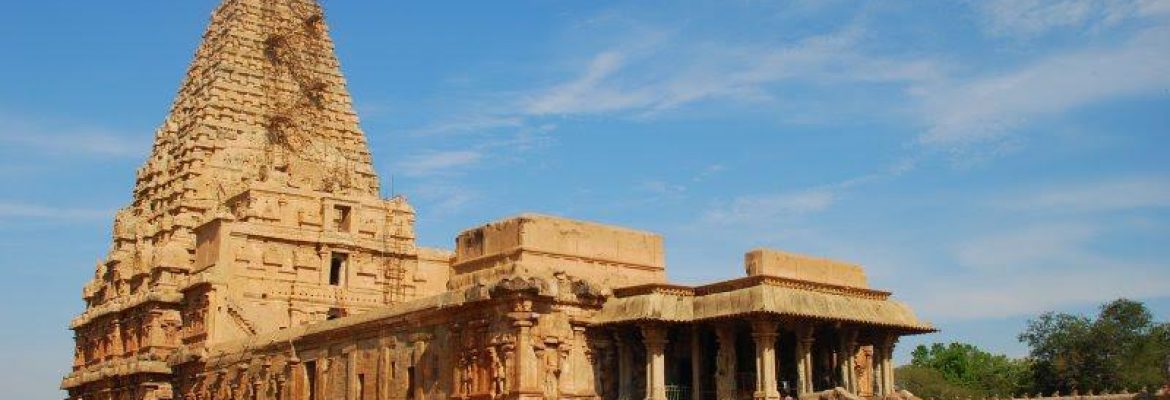Brihadeeswara Temple, Tamil Nadu, India
Come here twice: in the morning, when the tawny granite begins to assert its dominance over the white dawn sunshine, and in the evening, when the rocks capture a hot palette of reds, oranges, yellows and pinks on the crowning glory of Chola temple architecture. The World Heritage–listed Brihadishwara Temple was built between 1003 and 1010 by Rajaraja I (‘king of kings’). The outer fortifications were put up by Thanjavur’s later Nayak and British regimes.
You enter through a Nayak gate, followed by two original gopurams with elaborate stucco sculptures. You might find the temple elephant under one of the gopurams, dispensing good luck with a dab of his trunk to anyone who puts a rupee in it. Several shrines are dotted around the extensive grassy areas of the walled temple compound, including one of India’s largest statues of Nandi (Shiva’s sacred bull) facing the main temple building. Cut from a single rock, this 16th-century Nayak creation is 6m long.
A long, columned assembly hall leads to the central shrine with its 4m-high Shiva lingam, beneath the superb 61m-high vimana (tower). The assembly hall’s southern steps are flanked by two huge dvarapalas (temple guardians). Many lovely, graceful deity images stand in niches around the vimana’s lower levels, including Shiva emerging from the lingam (beside the southern steps); Shiva as the beggar Bhikshatana (first image, south side); Harihara (half Shiva, half Vishnu) on the west wall; and Ardhanarishvara (Shiva as half-man, half-woman), leaning on Nandi, on the north side. Between the deity images are panels showing classical dance poses.
The compound also contains a helpful interpretation centre along the south wall and, in the colonnade along the west and north walls, hundreds more linga. Both west and north walls are lined with exquisite lime-plaster Chola frescoes, for years buried under later Nayak-era murals. North of the temple compound, but still within the outer fortifications, are a park containing the Sivaganga tank, and 18th-century Schwartz’s Church.
Visit India Epic India Route © Monika Newbound


